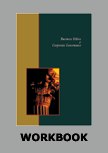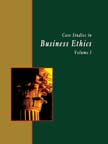Sustainable Development at British Petroleum
|
|
ICMR HOME | Case Studies Collection
Case Details:
Case Code : BECG056
Case Length : 18 Pages
Period : -
Pub. Date : 2006
Teaching Note :Not Available
Organization : British Petroleum
Industry : Oil and Chemical
Countries : United Kingdom
To download Sustainable Development at British Petroleum case study (Case Code:
BECG056) click on the button below, and select the case from the list of available cases:

OR

Buy With PayPal
|
Price:
For delivery in electronic format: Rs. 400 ;
For delivery through Shipping & Handling Charges extra: Rs. 400 +Shipping & Handling Charges extra
»
Business Ethics Case Studies
» Case Studies Collection
» ICMR Home
» Short Case Studies
» View Detailed Pricing Info
» How To Order This Case
» Business Case Studies
» Case Studies by Area
» Case Studies by Industry
» Case Studies by Company
Please note:
This case study was compiled from published sources, and is intended to be used as a basis for class discussion. It is not intended to illustrate either effective or ineffective handling of a management situation. Nor is it a primary information source.
Chat with us

Please leave your feedback

|
|




<< Previous
History
The origin of BP dates back to 1901, when William Knox D'Arcy (D'Arcy), an Englishman, got a concession from the Shah of Persia to explore for oil in the Middle East. D'Arcy incurred huge costs on his explorations but failed to discover any oil deposits.
|
Subsequently in 1905, he required more finances and these were met by the Burmah Oil Company.7 In 1909, oil deposits were discovered in South West Persia. This marked the founding of the Anglo-Persian Oil Company (APOC). D'Arcy was appointed as a director and Lord Strathcona (Strathcona) was made chairman of APOC. The Burmah Oil Company held 97% of the company's ordinary shares and the remaining 3% was held by Lord Strathcona. In 1914, the British government acquired a majority shareholding in APOC. In 1917, APOC acquired a division of the German-based Europaische Union which was under the control of the British government and used 'British Petroleum' as its trade name. With this deal, APOC incorporated 'British Petroleum' as its trade name.
|

|
In 1932, the Shah of Persia terminated the concession due to a disagreement over the share of profit held by the Persian government in the company. However, in 1933, the concession was restored to a limited area and the Persian government was allowed to have a greater share in profits.
|
|
In 1936, Persia was renamed Iran and with this, APOC became the Anglo-Iranian Oil Company (AIOC). In 1947, the company diversified into petrochemicals through an agreement with the Distillers Company.8
By the mid-1900s, the AIOC had begun explorations in Canada, South America, Africa, Europe, and Indonesia/Papua New Guinea. It also constructed refineries in Europe and Australia. In 1951, with the nationalization of the oil industry, the Iranian government sought to nationalize the company's assets. The British government was not in favor of nationalization and therefore decided to leave the country. As a result, AIOC decided to expand to other Middle East countries of Kuwait, Libya, and Iraq... |
Excerpts >>
|
|









